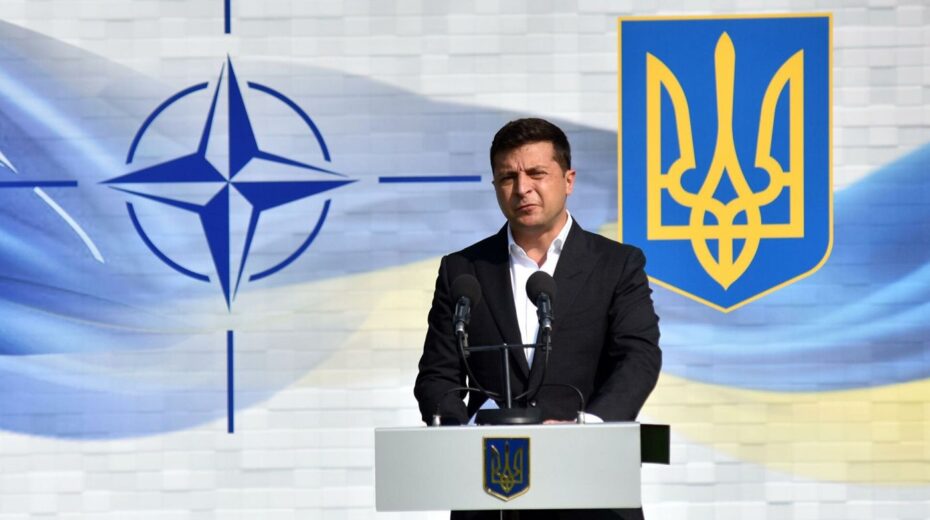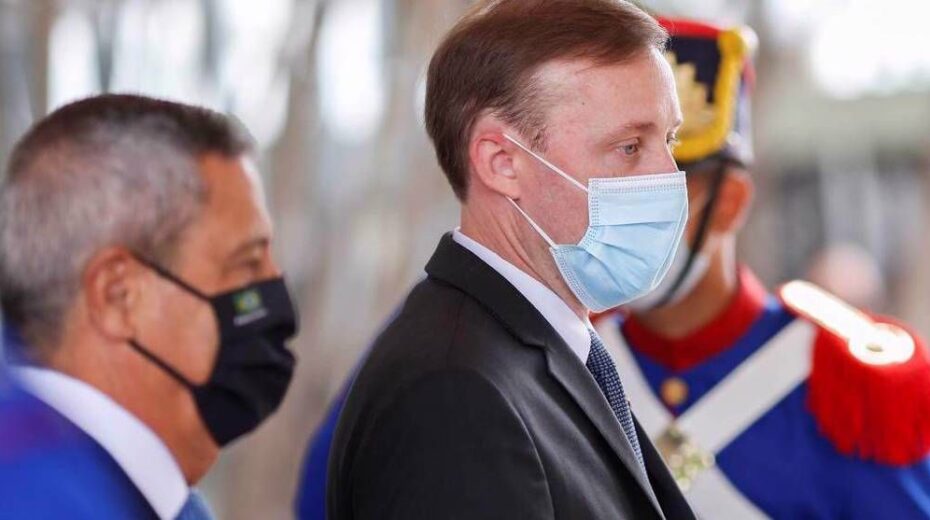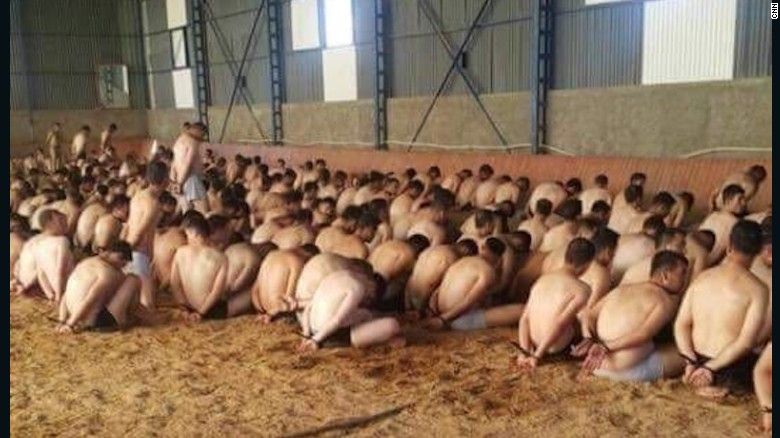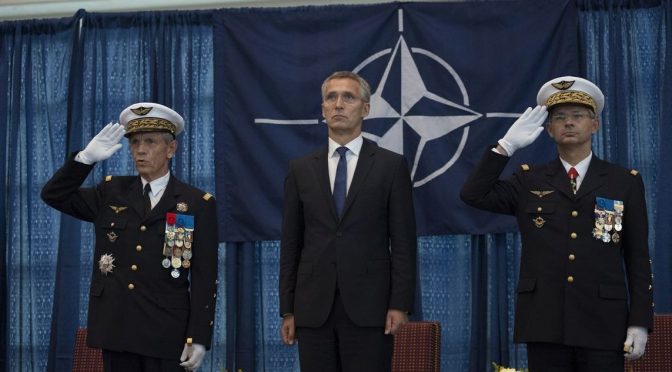Ukrainian President Zelensky captured headlines once again with his reminder to the Washington Post and to the world that his country will never be a part of NATO. At least this much is what one can only infer from what was actually quite the complaint.
The U.S. still won’t grant a membership path to Ukraine despite all it has sacrificed to be in the club. Washington says ‘no’, regardless of the many creative ways Ukraine tilts at windmills.
The latest rejection from Biden came with the reprimand that Ukraine still has too much corruption, and a highly insulted Zelensky deflected this, refraining from raising Biden’s personal role in Ukrainian corruption. Zelensky claims that not allowing Ukraine into NATO was a sign of Russia’s growing relative influence, a fair point and probably accurate. Of course for Russia’s influence to grow only at minimum requires the inverse corollary; that NATO’s influence is shrinking.
The antics in Ukraine with NATO are part of a broader pattern of events, no less recent, where the alliance exhibits an odd behavior with Turkey as well. It’s impossible to mention this without adding the collapse of the Afghan mission, and why the sudden pivot to Brazil can only be understood in this light.
These connected cases are all strong indicators of the decline and subsequent reorientation of NATO. The real ties that bind NATO aren’t ideological, but geopolitical. Behind geopolitical commitments lay economic entanglements.

Zelensky’s situation is very frustrating indeed. It was just in October 2019 that Jens Stoltenberg made a very well publicized visit to Ukraine, and addressed the Verkhovna Rada declaring, “As a sovereign nation, Ukraine has the right to choose its own security arrangements. NATO’s door remains open,”., only to hedge that by saying, “No outside country has the right to veto. The time of spheres of influence is over,” explaining that only NATO countries and applicants can decide on NATO membership. The problem is that NATO countries – at least the U.S. and likely Germany – do not want the Ukraine liability in the alliance.
And this is because the time of spheres of influence – through multipolarity – has returned.
North Atlantic or Latin America?
Courting Brazil is reflective of the U.S. re-orienting its hegemony and ‘right-sizing’ its military operations and supply-line security for the new reality. This case by itself may misrepresent that NATO is broadening its power projection in the world. We are in a period of disentangling from distant commitments where supply-line security cannot be guaranteed any longer, and so the U.S. moves to increase its hegemony in Latin America.
Global finance capital is entirely tangled up, a strength that also comes with grave liabilities, and the entanglements connect China to Europe in ways that work against U.S. hegemonic interest in Latin America.
While the U.S. ultimately wants to exclude European industrial concerns from Latin America, it must play at introducing NATO into Latin America so that European industrialists don’t push for an EU policy on Latin America that favors China over the U.S..
The particular offer to Brazil to join NATO from the U.S. through National Security advisor Jake Sullivan was conditioned on dumping China’s Huawei. This would be connected to a broader agenda against BRICS. When Trump promoted the idea in 2019, it was met with predictable ridicule in American press. Now that the same is promoted by the Biden administration, it receives due respect. As an aside, it’s interesting to see another case in point of the foreign policy of the Trump administration carrying forward into the “Biden administration”.

And this is why Trump was right when he said that NATO was obsolete, a statement that horrified the Deep State and the entire globalist banking and intelligence apparatus that supports it.
In that sense also, we may instead be seeing the transformation of NATO into something like a PATO, a Pan-American Treaty Organization. All of this points to a U.S. strategy of realizing its place as a very strong continental power upon the Americas within the framework of a multipolar world. It signifies that at the very least, the U.S. is hedging its bets on being a unipolar power of a single world order.
Turkey – Who needs enemies when you have friends like NATO?
None of the NATO armies have directly confronted Russia with live fire in a real operation except Turkey. NATO aspirant Ukraine for its part has, at least quite arguably so in the Donbas, so the message being sent from the U.S. is surely strange.
Turkey is undoubtedly the NATO member that isn’t. In the course of nearly escalating from a dog fight over the skies of northern Syria, that saw the downing of a Russian jet in 2015 and public uproar in Russia, Turkey stood at the precipice of a major armed conflict. The world waited to see if Turkey would try to petition NATO for a decisive action on Russia. But then cooler heads prevailed, and facts came to light that raised questions about the Turkish pilot’s relationship with Gulen. Was there a plot to draw Turkey and Russia into an armed conflict?
Consider the meaning through this whole ordeal wherein we have a Turkey that now is a NATO member on paper only. Recall that after the conclusion of the Russia-Turkey row, the U.S. backed a failed coup in 2016 operationalizing its Gulen assets in the military to overthrow Turkey’s elected government. And it backed this coup in the middle of a Turkish military campaign against Syria, a campaign which the Obama administration had itself coordinated and urged Turkey to become involved in.

This is all very bad optics indeed, and a sign that NATO doesn’t create a reliable defense partnership. NATO stubbornly insists on sending all the wrong messages at all the wrong times, as if being able to get away with such antics might itself be a sign of stability and power.
Ukraine commits ritual seppuku to satiate the gods of NATO, but still no NATO membership. Turkey makes a high risk gambit which could have seen Kurdish dreams of a state realized, simply to satisfy the U.S. mandate to destroy the Syrian state. In response, the U.S. thanks Turkey by trying to overthrow the Turkish president. NATO seems to no longer be able to support or guarantee a new member-state like Ukraine, and more, can’t even manage to retain its current roster (Turkey) if it involves actual conflicts involving Russia, NATO’s raison d’être.
A Fading Memory of a Bygone Era
A few short decades ago NATO suddenly metastasized into a former set of Warsaw countries in 1999. So what has changed? The world has changed, everything has changed. NATO’s strategists can see that any genuine security investment into Ukraine would be lost and even handed over to the Russian Federation in the forty-eight hours or so it would take for Moscow to complete a military occupation of Kiev. This isn’t to say that Moscow prefers this option, but sufficed to say, militaries do exist for reasons.
The overnight collapse of the U.S.-led occupation of Afghanistan has consumed the public’s imaginations for the past week, but how this reflects the general decline and incoherence of NATO is the broader and more interesting story. To wit, this recent geopolitical and military defeat handed to NATO – which was a part of the occupation under the rubric of the UN-mandated International Security Assistance Force (ISAF) and Operation Resolute Support – is only the most recent chapter reflective of its general period of decline.
NATO’s dance with Ukraine, Brazil, and member state Turkey, indicate that the project has run out of gas. So as NATO’s efforts in Afghanistan were ultimately and decisively ended by the eighty-thousand strong force of Taliban, who are now reestablishing their Islamic Emirate of Afghanistan, it becomes impossible not to connect this to what appear as endemic problems underlying the entire framework of NATO.

NATO once had a mission and once told a story. That story was important for the public to understand. It was a clear story of good versus evil, of freedom versus dictatorship, of democracy versus communism. In short, it was the narrative of the Cold War reified into a military alliance.
Naturally, once the USSR and the Warsaw Pact collapsed thirty years ago, one would have thought that the OSCE and similar, could have evolved into security treaty organization including both western European states and the former Soviet bloc countries.
But one would only think such a thing if one had believed that the Trans-Atlantic frustration with Russia was primarily driven by a crusade against communism.
The EU Army: The U.S. Views the EU as a Potential Threat
Trump’s declaration that NATO is obsolete was likely not just a reference to its inability to counter terrorism as he later amended, but rather a more overt declaration that the economic underpinnings of NATO – Trans-Atlantic banking – had come to an end. This is because that point much aligns with his ‘trade war’ against Germany and the EU by extension.
NATO and the EU are two quite distinct phenomenon, and while interdependence engendered mutual success in the post-war era, the period we have entered bears a different logic all together.
The one country’s leadership that has stood up and said, “come extract our resources, come take our labor supply, come IMF and lend to us, come America and put your bases on our soil,” has been the Ukrainian. Odd then that Ukraine finds itself out of luck with NATO and, quite separately, the EU.
The U.S. has typically incorporated EU states into NATO, which had long painted the illusion that the EU was fundamentally a NATO friendly project in its rationale and long-term goal. Rather, it’s better conceived as a touch-and-go series of negotiations between ‘frenemies’. Post-war Europe has sought to develop enough capital and technique through decades of rebuilding and later expansion into the regions first prospected by the German Third Reich, but until recently could only do so with the U.S.’ approval and supporot.
The words of NATO’s first Secretary General Lord Ismay are probably more to the point, when he said the NATO mission was to “Keep the Russians out, the Americans in, and the Germans down”.
But what if Germany no longer wants to be kept down?
While much of Europe’s financial concerns are tied up with a banking conglomeration which blurs national barriers even at the Trans-Atlantic level, the industrial concerns and, in plain terms, the physical economy of Europe is viewed as a competitor economy to the U.S.’. As all economic facts of life, they have profoundly political corollaries.
The EU’s premier states, Germany and France, have for the last five years quite audibly pronounced the need for an EU army. The Obama era response is that one already exists, called NATO. The Trump era attitude seemed warmer to the idea, even if superficially concealed with the language of NATO states paying more of ‘their share’ even if the New York Times put words in his mouth that may have been, in a strange twist, closer to the truth. Biden now appears to have inherited whatever Trump was able to establish. Whether the U.S. would just allow a parallel establishment which excludes it, to rise up, is a good question. So far, they have done little to counter it besides creating some information war confusion on the status of the question.
There is a precedence for a European defense organization, in fact it precedes NATO. Known then as the Western Union Defense Organisation (WUDO), this was the core of modern NATO sans the U.S.
The U.S. will continue to be a top-level regional hegemon, if it can better orient its productive and financial vectors. It also would need to invest in infrastructure and reduce the austerity imposed on its working class. We should expect to see the U.S. continue to downsize its commitments outside of the Americas, and we expect to see the U.S. increase its efforts to reintroduce a Monroe Doctrine 2.0 inside the Americas.



It will be hard to impose a Monroe Doctrine 2.0 this time around, now that china-friendly leftist movements are taking power, including, most probably Brazil, with Lula 2.0